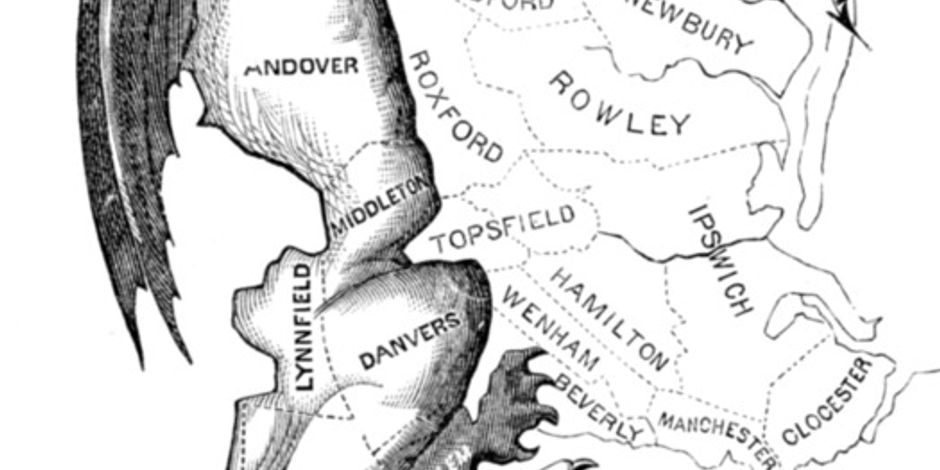Spawn of The Gerrymander

We all learned about “gerrymandering” back in middle school, thanks in part to that famous 19th century illustration that depicted politically manipulated voting-district boundaries into a contorted monster. This project draws inspiration from that classic illustration — one of the most effective infographics of all time.
The goal: Draw fresh attention to the contemporary manipulation of congressional-district boundaries for political reasons. The problem is more acute than ever, with contorted districts drawn to assure incumbent parties stay in power, exacerbating ideological polarization and legislative gridlock.
The strategy: Five illustrators devise relatable visualizations of the unnatural shapes of five blatantly “gerrymandered” Congressional districts in 2014. These “Spawn of the Gerrymander” will arrive in the fall, when the mid-term elections are in the news. They’ll take the form of animated GIFs that could spread through social media and reach a wider audience than wonkier treatments of the issue.
The need: Most visualizations of gerrymandered districts these days are crude and unmemorable. (For more on that and why it matters, please see my Design Observer essay, “Seeing The Problem”: http://observatory.designobserver.com/entry.html?entry=381.)
In short: Think of this project as creating a five-headed sequel to a landmark illustration. Who knows what creatures today’s grotesquely drawn districts will inspire??
I have a great platform: DesignObserver.com, is on board, and has a wide online and social-media audience. I also have relationships with a slew of highly talented and well-known illustrators conversant in the animated-GIF format.
The status: I have been in conversation with The Sunlight Foundation and other non-partisan groups to identify the most-gerrymandered districts. This reporting/research component of the project is nearing completion. With Design Observer on board, it’s almost time to start approaching contributing artists.